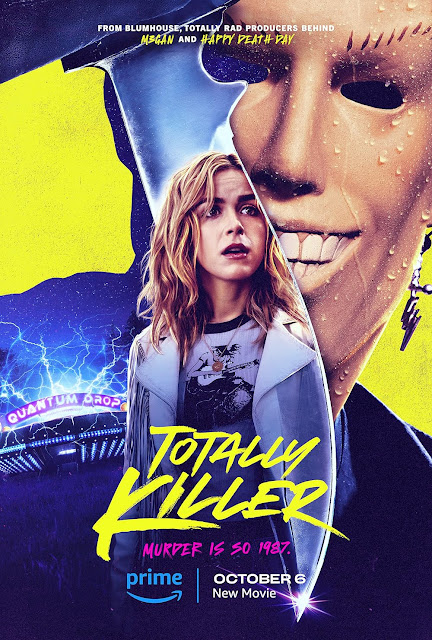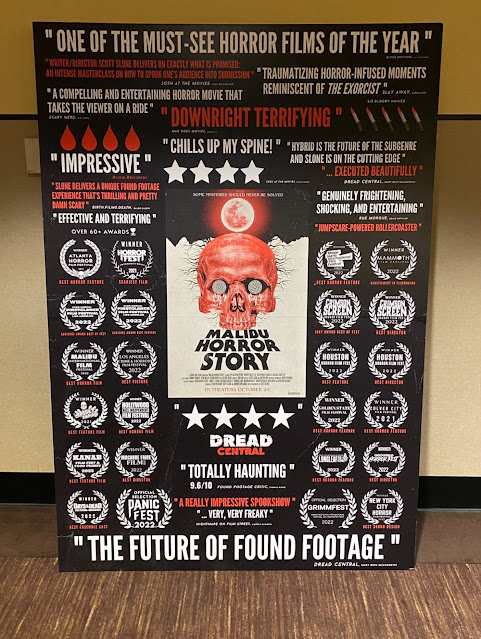From the writings of John William Polidori (The Vampyre) and Sheridan Le Fanu (Carmilla) in the 1800s, to the lesbian vampire films of the 1970s, the vampire has long been used in fiction as a symbol of same-sex attraction and sexuality. Even before modern conceptions of queerness were formulated, the vampire embodied sexual taboos such as pre-marital sex, promiscuity, and sadomasochism. However, given the intimate and penetrative aspects of the vampire’s bite - as well as the monster’s indiscriminate choice of victims - the figure of the vampire provides the perfect veil for authors and filmmakers who wish to explore queer desire, sex, and lifestyles in their work.
Two vampire films from the 1980s, in particular, make noticeable use of the vampire’s inherent allure to explore the implied homoerotic desires of their protagonists: FRIGHT NIGHT (1985) and THE LOST BOYS (1987). Both films follow the descent of a teenage boy into the world of the vampiric and reckon with the impossible contradiction of attraction and repulsion that the vampire inspires within them. This inconsistency of feeling mirrors the undeniable attraction crossed with internalized homophobia that young queer men were likely to experience in 1980s America.
While FRIGHT NIGHT’s Charley and THE LOST BOYS’ Michael have heterosexual love interests in each film, their relationships with those women take a backseat to their interactions with the vampire they encounter. These women, Amy and Star respectively, are barely fully fleshed-out characters and seem to exist purely as vampire bait, facilitating the conflict between Charley, Michael, and the vampires. To begin with FRIGHT NIGHT, Tom Holland’s film is the more explicitly homoerotic of the two, with more than a few scenes that will cause any queer viewer to raise an eyebrow.
For one, FRIGHT NIGHT’s resident vampire Jerry lives with a man - another non-human named Billy. It is unclear whether or not Billy is a vampire; however, as Jerry’s servant and protector, it is heavily implied that their relationship is more than platonic. Later in the film, Jerry corners Charley’s queer-coded best friend “Evil Ed” in a hallway, and tempts him to the ways of the undead with the following offer:
“Hello, Edward. You don't have to be afraid of me. I know what it's like being different. Only they won't pick on you anymore... or beat you up. I'll see to that. All you have to do is take my hand. Go on, Edward. Take my hand!”

These lines paint a picture of Jerry as an older queer man offering Ed a new life of freedom, an entrance into a world where his differences would be embraced. In another scene, Jerry emerges from Charley’s closet to attack him, before violently throwing his body back through the closet doors. The symbolism of the metaphorical “closet,” as well as what it means to go in or “come out” of it, is clear, and surely not lost on those queer individuals behind the camera or in front of the screen. Unfortunately for Jerry, heterosexuality wins out. He and Billy are vanquished, Ed is possibly dead, and Charley and Amy live happily ever after when the film concludes. This time, it seems, the straight way of life has reeled our protagonist back in - his status quo undisrupted.

Three years later, the world saw the release of Joel Schumacher’s teen vampire epic THE LOST BOYS. Drawing inspiration from the tale of Peter Pan, THE LOST BOYS follows brothers Michael and Sam as they move to a new town with a deadly secret. As the boys soon learn, their new home of Santa Carla is also home to a gang of teenage vampires - lost boys in leather who terrorize the streets of Santa Carla from the backs of their motorcycles. The “lost boys” are led by David, a vicious killer who takes a liking to Michael after his half-vampire consort Star catches Michael’s eye. While Michael is supposed to be Star’s first kill, in order to complete her transformation into a vampire, David offers to let Michael join their gang instead. The only problem is, Michael has no idea that the boys are vampires…until it is too late.

After unknowingly drinking David’s blood from an ornate bottle, Michael begins to transform into a vampire. As his transformation progresses, the vampires begin to push him through more and more intense initiation rituals, which Michael begins to realize will leave him undead if he completes them. As he begins to change, Michael’s dreams are haunted by David’s voice, calling him out to play with their crew. At first, Michael enjoys the camaraderie he finds with the vampires and the competition over Star that he engages in with David, and the other vampires seem to enjoy his company as well. However, when Star and the child vampire Laddie need Michael’s help to escape David’s influence, Michael teams up with his little brother and the Frog brothers to kill all of the vampires, saving himself from their fate.

Both Jerry and the vampires from THE LOST BOYS have an inherent element of cool. While Jerry is suave and refined, the vampire gang is alternative, hardcore. Their demeanors invite you to like them, and inspire intrigue, despite the clear danger they pose. However, their lifestyles are each differently queer. Where Jerry apparently has a live-in partner - who is also a man - David and his henchmen live communally, in a homosocial group with the exception of Star (who is more of a toy than a true member of their troop).
It is worth acknowledging that these tales about the fear of vampirism - or indeed queerness - are occurring at the height of the AIDS crisis, and a time when American society was less than welcoming to the queer community. In fact, even today we are seeing an increase in homophobic sentiment in the states around the country. However, these fears are nothing new, and neither is the queer community. We’ve always been here, and we always will be. We will outlive those who try to put us in the ground. Immortal, just like the vampires that have symbolized us for centuries.













































